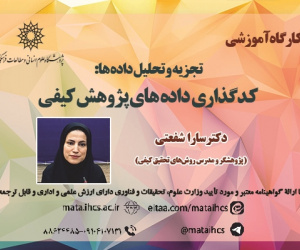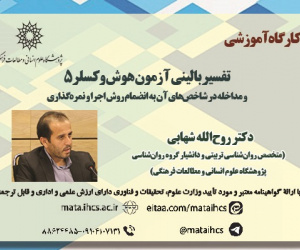کاربرد تصاویر ماهواره ای سنتینل -2 و لندست -8 و مقایسه کارایی آن ها در برآورد کلروفیل آ در خلیج گرگان (مقاله علمی وزارت علوم)
درجه علمی: نشریه علمی (وزارت علوم)
آرشیو
چکیده
با توجه به تغییرات به وجود آمده در شرایط کیفی آب در خلیج گرگان به ویژه در دهه اخیر، هدف از انجام این مطالعه بررسی کاربرد تصاویر ماهواره ای سنتینل-2 و لندست 8 و مقایسه کارایی آن ها در برآورد کلروفیل آ در این منطقه می باشد. بدین منظور، ابتدا تصاویر ماهواره ای خلیج گرگان از ماهواره های سنتینل-2 و لندست-8 از فروردین 1400 تا 29 مرداد 1401 تهیه و آماده سازی 29 تصویر شامل تصحیح اتمسفری، جداسازی پهنه آبی، پردازش تصاویر انجام شد. سپس نقشه های غلظت کلروفیل آ بر اساس واحد میلی گرم بر مترمکعب با استفاده از مدل های NDCI،D05،M09 و T07 در نرم افزار ENVI به دست آمد و با داده های میدانی در ایستگاه های بندر ترکمن، نوکنده و بندرگز مقایسه شدند. نتایج نشان داد که مدل NDCI و M09 در برآورد غلظت کلروفیل آ همبستگی خوبی با داده های میدانی داشتند. بر اساس تحلیل تصاویر ماهواره سنتینل-2 در مقایسه میان مدل ها، بالاترین میزان ضریب همبستگی (R) با داده های میدانی در مدل NDCI، برابر با 633/0 بود که کمترین خطای میانگین ریشه مربعات (8/8 میلی گرم بر مترمکعب) را داشتند. بر اساس تحلیل تصاویر ماهواره لندست-8 در مقایسه میان مدل ها، بالاترین ضریب همبستگی (R) با داده های میدانی در مدل M09 و برابر با 743/0 به دست آمد که کمترین خطای میانگین ریشه مربعات را به میزان 33/2 میلی گرم بر مترمکعب را داشت. نتایج تحقیق حاضر نشان می دهد که بر اساس تصاویر ماهواره سنتینل-2، مدل NDCI و بر اساس تصاویر ماهواره لندست، مدل M09 جهت تخمین کلروفیل آ در خلیج گرگان کارایی قابل قبولی دارند.The application of satellite images Sentinel 2 and Landsat 8 and comparison of their capabilities in estimating chlorophyll-a concentration in the Gorgan Bay
Regarding the changes in the water quality of Gorgan Bay, this study aimed to investigate the capabilities of satellite images Sentinel 2 and Landsat 8 and compare their efficacy in estimating chlorophyll-a concentration. In this research, satellite images of the bay were obtained from Sentinel-2 and Landsat-8 from April 2021 to August 2022. The preparation of 29 images including atmospheric correction, separation of the water zone, and image processing were performed. Then, chlorophyll-a concentration maps (mg/m3) using the models of NDCI, D05, M09, and T07 were obtained from ENVI software and compared with field data in the stations of interest. To estimate chlorophyll-a concentration, the results showed that NDCI and M09 models were well-correlated with field data. Based on Sentinel-2 satellite images and in comparison to other models, the highest correlation coefficient (R) with the field data was found in the NDCI model (0.633) which showed the lowest root mean square error (8.8 mg/m3). According to the Landsat 8 images and compared to other models, the M09 model had the highest correlation coefficient with the field data (0.743) and showed the lowest root mean square error (2.33 mg/m3). Results of the present work indicated that for Sentinel-2 satellite images, model NDCI, and based on Landsat 8 satellite images, the M09 model had a reasonable efficacy in the Gorgan GulfExtended AbstractIntroductionGorgan Gulf, one of the largest Gulfs of the Caspian Sea, is located in the southeast corner of this sea. From ecological and economic viewpoints, the Gorgan Gulf and Miankale Wetland are significant. The Caspian Sea level, nearby rivers, and the Miankale Peninsula influence the Gorgan Gulf. It plays a vital role in the growth and reproduction of aquatic animals and bony and cartilaginous fish and attracts winter migratory birds.The concentration of chlorophyll-a plays a vital role as a quality indicator of water bodies, and the presence of phytoplankton is used to check the water quality and biochemical status. Common measurements of water quality parameters, such as estimating the amount of chlorophyll-a and water-soluble substances, require field sampling, analysis, and laboratory measurements, which are very costly and time-consuming. Remote sensing techniques provide an overview of large areas in real-time. Remote sensing algorithms that rely more on the detection of specific spectral features using the blue, green, yellow, red, or near-infrared range are well used to distinguish and detect algal blooms from other natural phenomena.Despite the high importance of the Gorgan Gulf ecosystem, few studies have been done regarding the estimation of chlorophyll-a using remote sensing data in this area. In this study, an attempt was made to estimate the chlorophyll data in the Gorgan Gulf using ENVI software and satellite images, and the results obtained through field sampling and previous studies were validated in this region to provide an index for the correct estimation of chlorophyll-a data in the Gorgan Gulf. Finally, among the models applied to determine the concentration of chlorophyll-a, the best model suitable for the studied area and correlated well with the field data was selected to prepare Chlorophyll-a concentration maps. MethodologyField sampling and measurement of chlorophyll-a concentration were performed monthly at three sites (Bandar Gaz, Nowkandeh, and Bandar Torkman) using the Algatorch device with an accuracy of 0.1 from April 2021 until August 2022 at surface depth. Algatorch device is one of the most famous sensors for measuring chlorophyll-a and cyanobacteria, and it can measure portable and the profile of chlorophyll accumulation at different depths. Satellite data images were received simultaneously with field data collection to analyze and estimate the required parameters. Landsat-8 and Sentinel-2 multispectral satellite images were used to estimate the concentration of chlorophyll a. Landsat-8 multispectral images have a spatial resolution of 30 m and a temporal resolution of 16 days. The number of 29 images related to 2021 to 2022 of Collection-2, Level-1 data type was downloaded from the US Geology website (https://earthexplorer.usgs.gov). Twelve images of Sentinel-2 data on the dates collected in the field were downloaded from the website (https://apps.sentinel-hub.com). To extract the concentration of chlorophyll-a, NDCI, D05, M09, and T07 models were used in ENVI software and then compared with the field data in the desired stations. Statistical parameters were applied to evaluate the efficacy of different algorithms: root mean squared error (RMSE) and R-squared relationship coefficient (R2). Results and discussion The results of field measurement of chlorophyll-a concentration in terms of mg/m3 in the studied area showed that the concentration of chlorophyll-a varies in the measured stations in different months of the year. The chlorophyll-a concentration results from Sentinel-2 and Landsat-8 satellite images showed that based on the analysis of Sentinel-2 satellite images, the correlation coefficient (R) between the relationship between the NDCI model and field data was equal to 0.633. The root mean square error (RMSE index) was the lowest error for the NDCI model at the rate of 8.8 mg/m3, with the highest correlation and the lowest error compared to other models. Also, based on the analysis of Landsat-8 satellite images, the correlation coefficient (R) between the M09 model and the field data was equal to 0.743, and the root mean square error (RMSE index), the lowest error for the M09 model was 2.33 mg/m3. NDCI and M09 models estimating chlorophyll-a concentration correlated well with field data. The result obtained by the NDCI method in Landsat-8 is more suitable than Sentinel-2. ConclusionBased on the results of the present study, the changes in the chlorophyll-a concentration during 2021-2022 were very significant due to the decrease in the water level of the gulf, and its maximum value was observed in winter 2021. Using the NDCI model on Landsat-8 satellite images and the M09 model on Sentinel-2 satellite images, a good estimate of the chlorophyll-a concentration in the turbid waters of the Gorgan Gulf could be provided. Through these models, biological studies can be done at a low cost and a higher speed. FundingThere is no funding support. Authors’ ContributionFatemeh Rahmani Khalili: satellite data collection, software implementation, analysis of results and writing. Sara Haqparast: methodology, validation and final writing. Kamran Nasir Ahmadi: data collection and editing. Vahid Khairabadi: data collection and calibration.. Conflict of InterestAuthors declared no conflict of interest. AcknowledgmentsThe author thanks and appreciates the cooperation of the experts of the General Department of Environmental Protection of Golestan and Mazandaran provinces who helped us in conducting this research, especially those who did the qualitative evaluation of the article. Also, the current research has been done in the form of a master's thesis at Sari University of Agricultural Sciences and Natural Resources..








